Form view definition
Overview
In Next Design, you can define a view to view and edit model details like a traditional design document by placing model fields in a form.
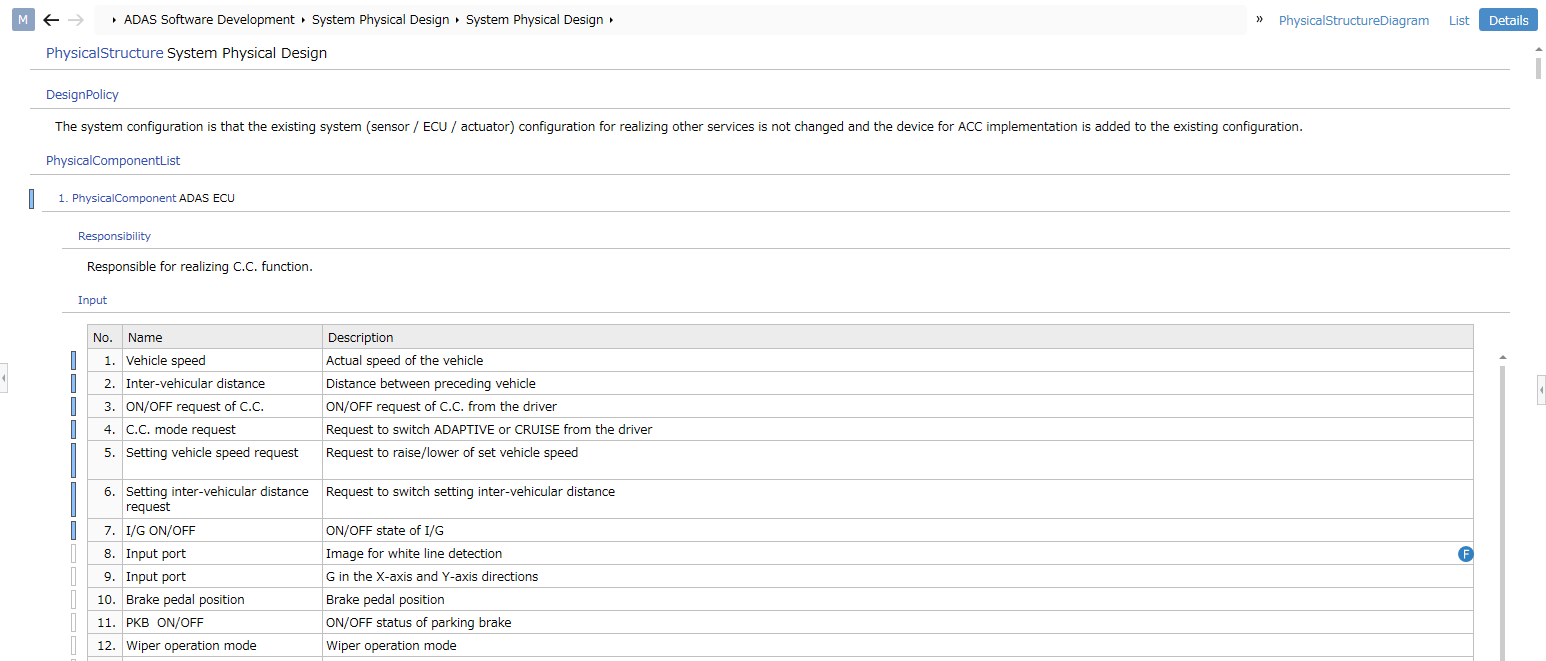
You can place all the fields you want to view and edit in one form, or you can define multiple forms and place only the fields you need depending on your purpose.
In addition to fields that hold values, you can also place fields that hold related models (hereinafter referred to as related fields) in a form. Related fields placed in a form can be viewed and edited in a sequentially numbered list format or grid format.
When placing many fields on a single form, you can group multiple fields to express a semantic unity or to make each group collapsible.
The following describes how to define a form-style view in the following order:
- Placing an existing field
- Placing related models in list format
- Placing related models in grid format
- Changing the display format of related models
- Changing the order of fields
- Hiding placed fields
- Grouping fields
Placing an existing field
Placing an existing field
To place an existing field defined in an entity on a form, follow the steps below.
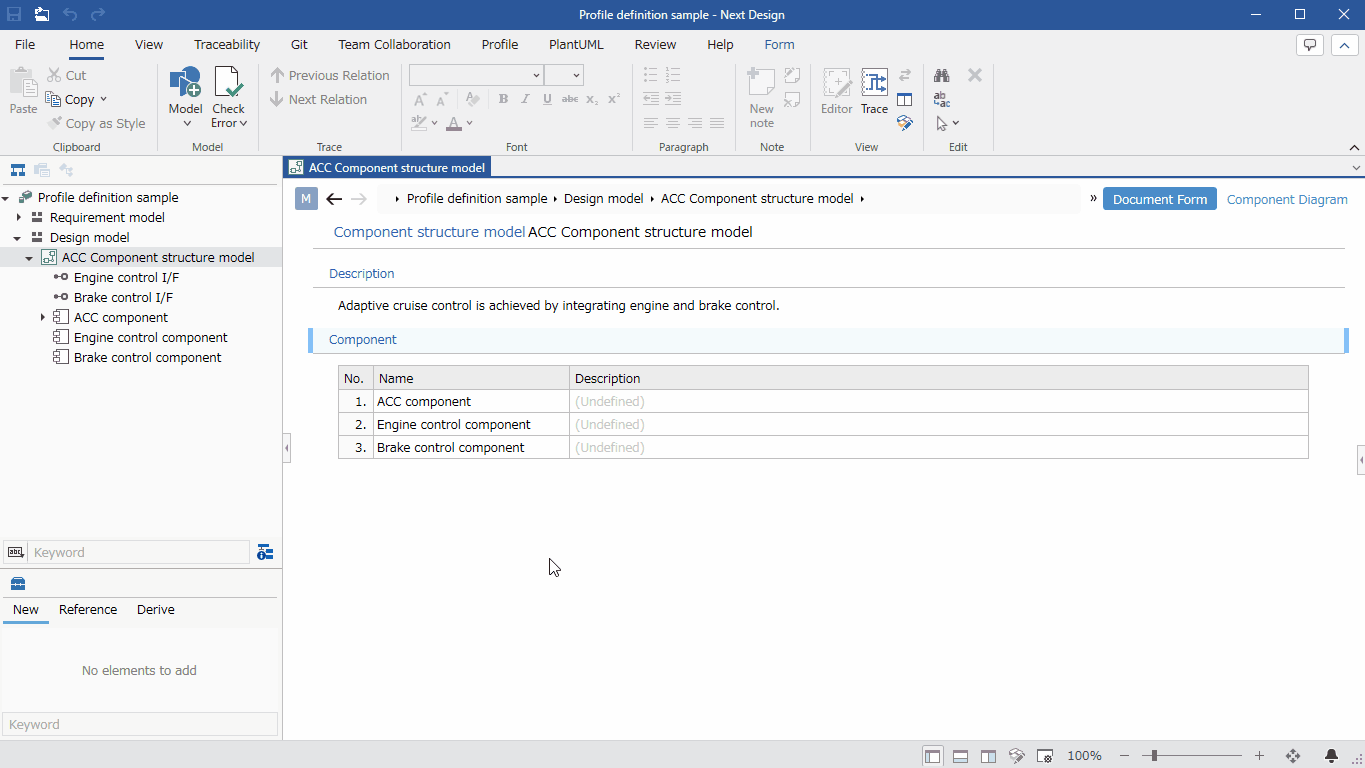
- Click a field that has already been placed on the form to select it and specify the placement position of the field.
- Open the [New Control] dialog box by doing one of the following:
- Click [Form] > [Form] > [Add Exist Fields] from the ribbon.
- Click [Profile] > [Add Exiting Field] from the context menu.
- In the [New Control] dialog, select the field you want to place from the [Fields] options.
- Next, select the UI format for editing from the [Form Element] options.
- When you press the [OK] button in the dialog, the selected field is placed on the form, and the name of the field is displayed as the title.
If no fields are placed on the form, follow the steps below.
- Click the model name at the top of the form to select it.
- Click [Profile] > [Form] > [Add Exist Fields] on the ribbon to open the [New Control] dialog.
- Select and place a field as in the previous operation steps.
Changing the display format of placed fields
To change the title display direction of a field placed on a form to the left and make the form more compact, follow the steps below.
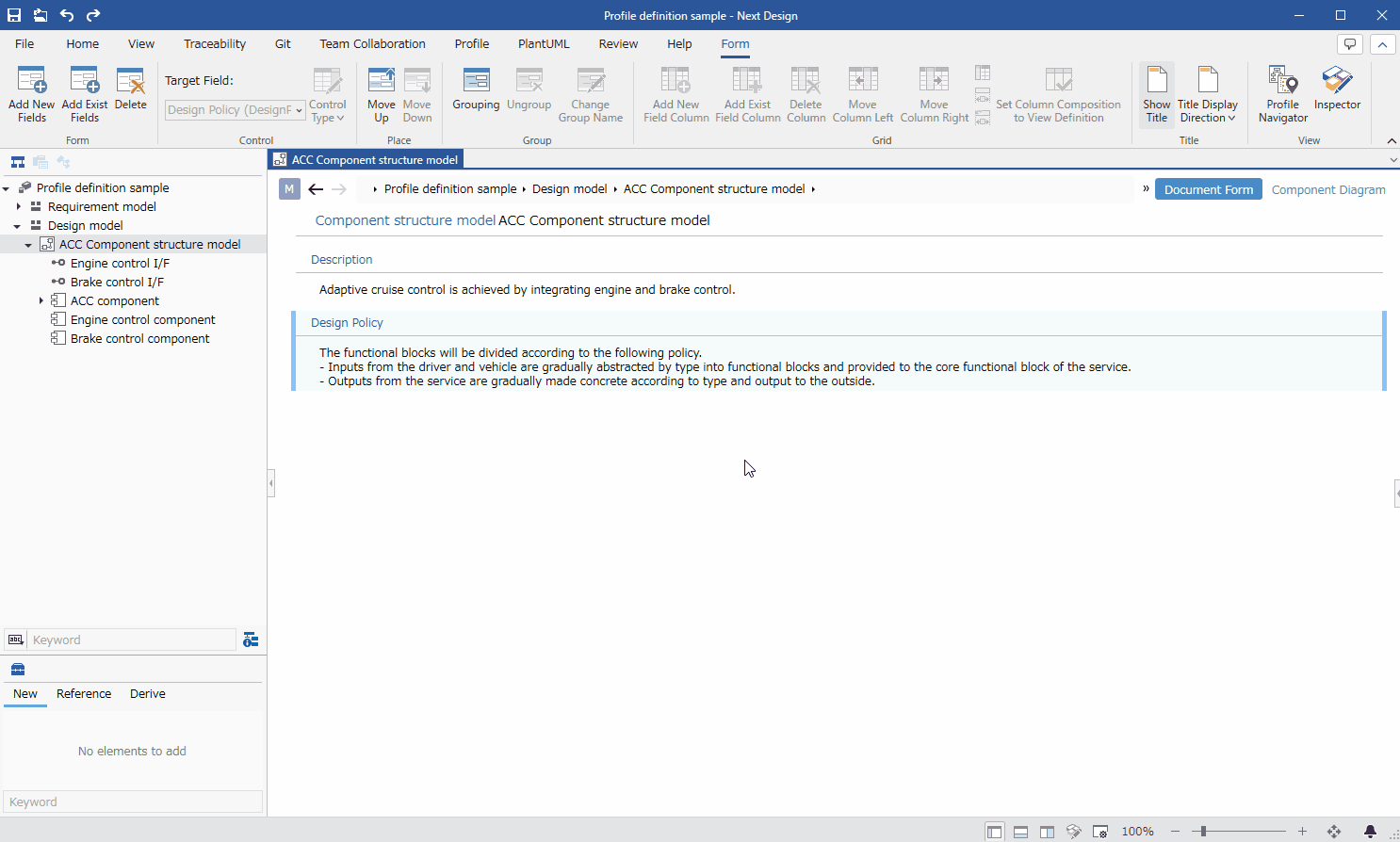
- To change the title display direction, do one of the following:
- On the ribbon, click [Form] > [Title] > [Title Display Direction] and select [Left].
- On the [Form Element] tab of the Inspector, select [Left] from [Title] > [Title Display Direction].
To change the field placed on a form to a two-column table format with title and value, follow the steps below.
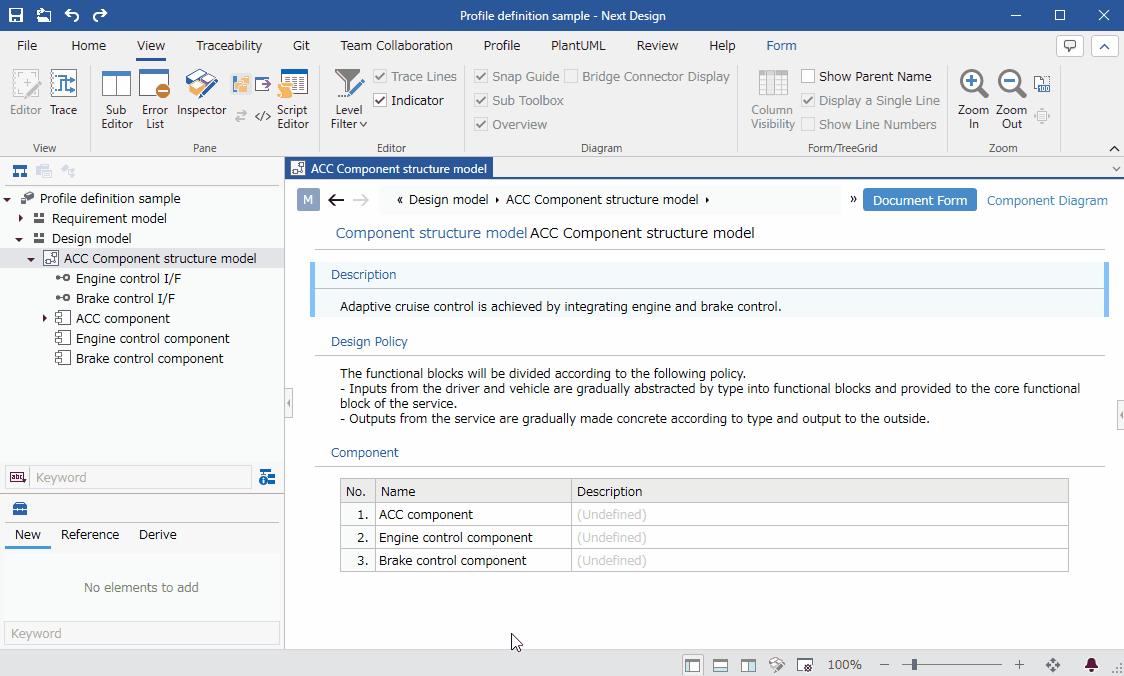
- Change the title display direction to left as in the previous step.
- Check the [Title] > [Title Display Direction] > [Surround an element with a line.] check box in the [Form Element] tab of the Inspector.
Place related models in list format
Place related models in list format
To place models related to an entity in a form in a numbered list format, follow the steps below.
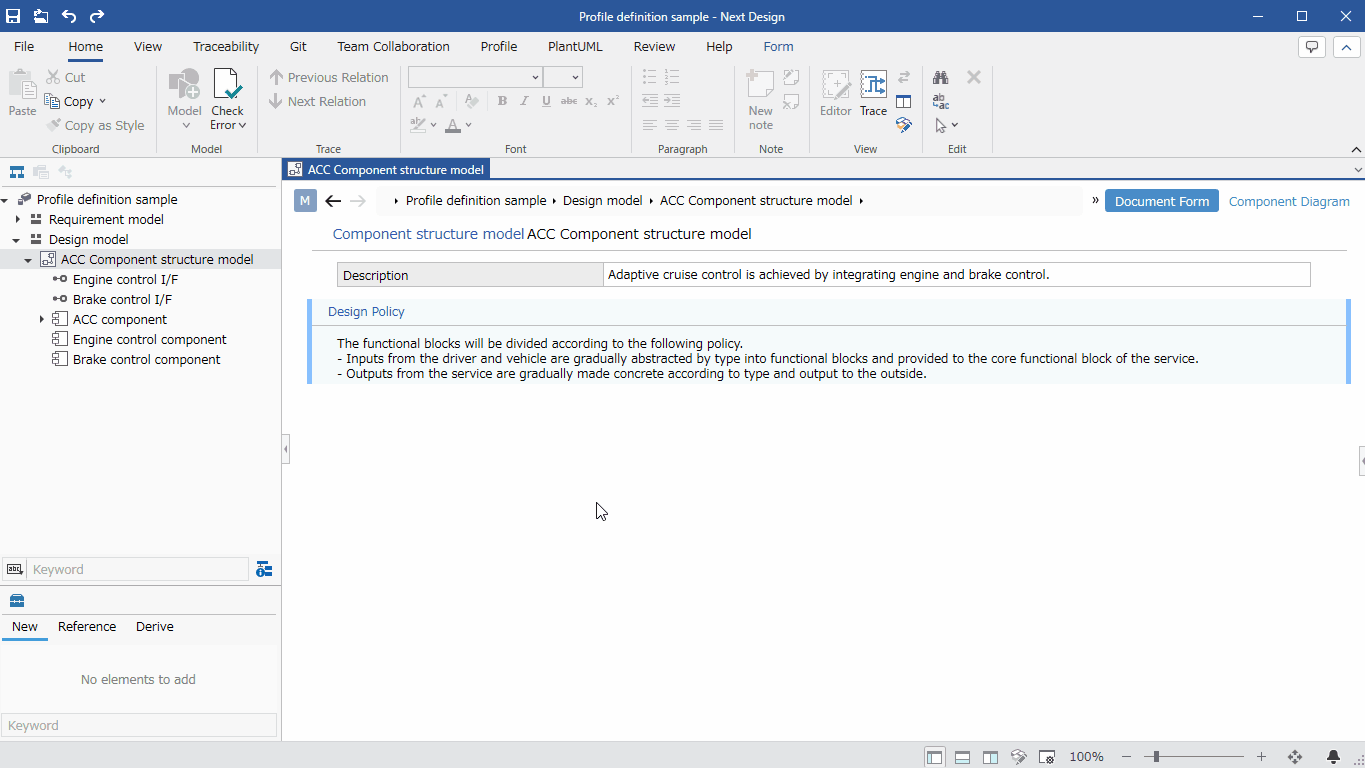
- As with "Placing an existing field," click and select a field already placed in the form to specify the placement location of the related model.
- Open the [New Control] dialog box by doing one of the following:
- Click [Form] > [Form] > [Add Exist Fields] from the ribbon.
- Click [Profile] > [Add Exiting Field] from the context menu.
- In the [New Control] dialog box, select the field that holds the related model from the [Fields] options.
- Next, select [List] from the [Form Element] options.
- When you press the [OK] button in the dialog box, the name of the selected field will be displayed as the title, and the related models will be placed under it with consecutive numbers.
Placing existing fields of related models
To place existing fields defined in the related models for each related model displayed in list format, follow the steps below, similar to "Placing existing fields" above.
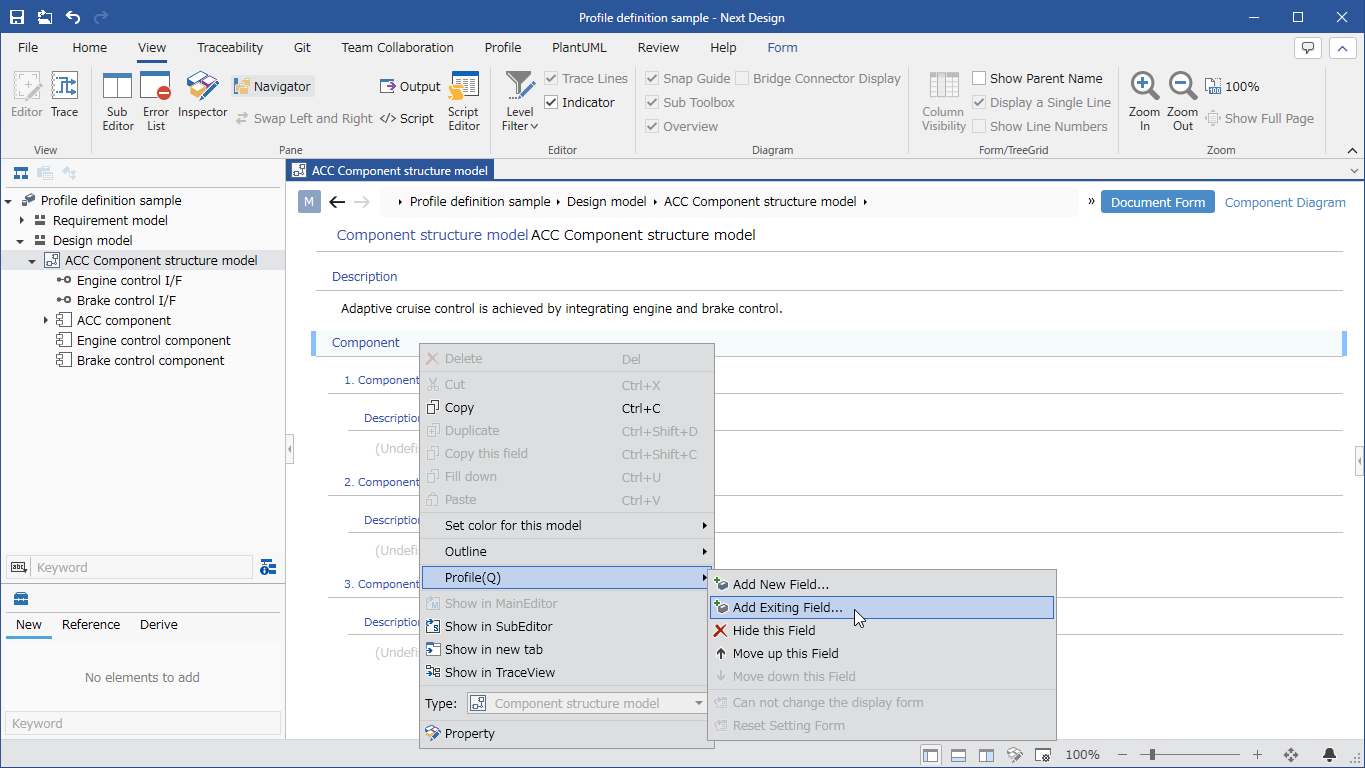
- Click the related model where you want to place the field, or the field of a displayed related model to specify the placement location.
- Open the [New Control] dialog by one of the following operations.
- Click [Form] > [Form] > [Add Exist Fields] from the ribbon.
- Click [Profile] > [Add Exiting Field] from the context menu.
- From then on, the existing field of the related model will be placed on the form using the same operation procedure as "Placing an existing field".
Placing related models hierarchically
To place related models hierarchically by tracing the relationships between models from related models displayed in list format, follow the procedure below as in "Placing related models in list format" above.
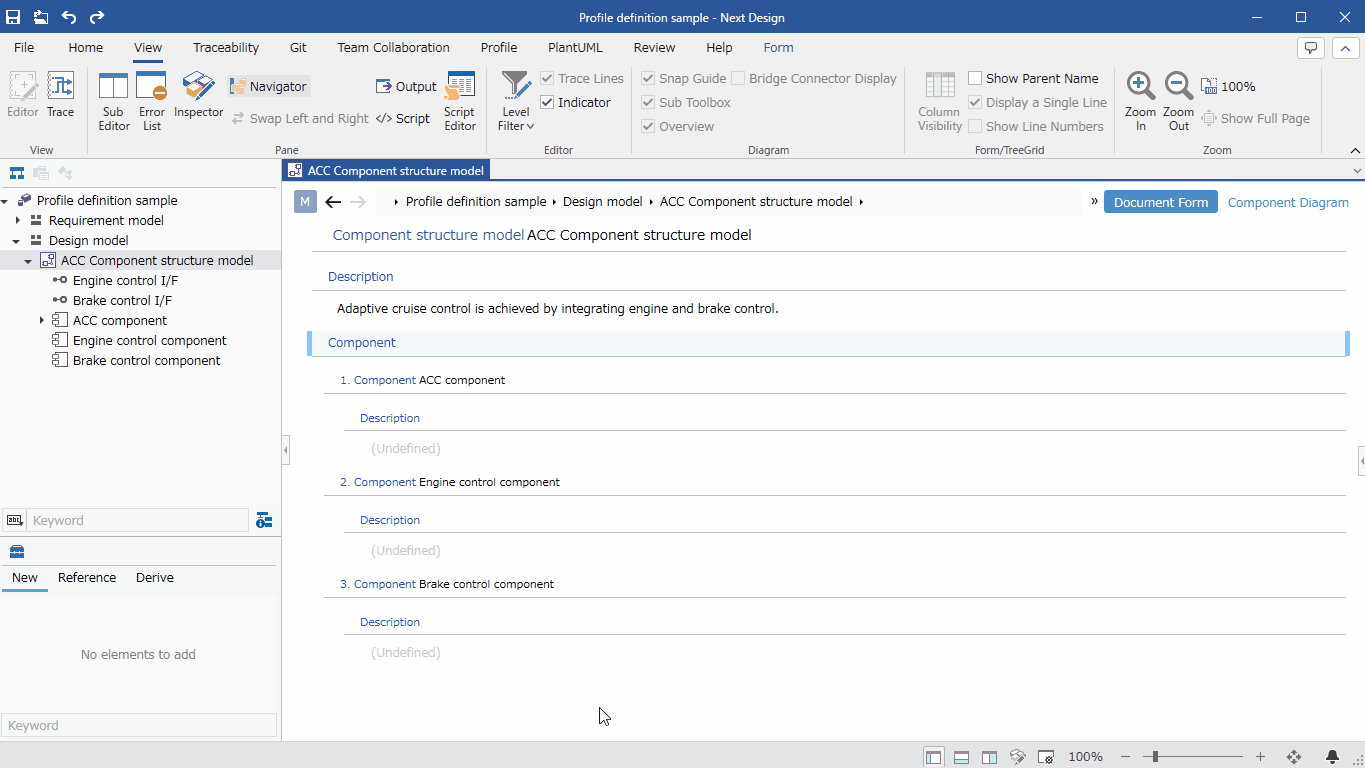
- To specify the placement location, click and select a related model or its field that has already been placed on the form.
- Do one of the following to open the [New Control] dialog.
- Click [Form] > [Form] > [Add Exist Fields] from the ribbon.
- Click [Profile] > [Add Exiting Field] from the context menu.
- From then on, the related models that have already been placed on the form and are related to them will be placed under the related models with consecutive numbers by the same procedure as "Placing related models in list format".
Placing related models in grid format
Placing related models in grid format
To place models related to an entity on a form in grid format, follow the steps below.
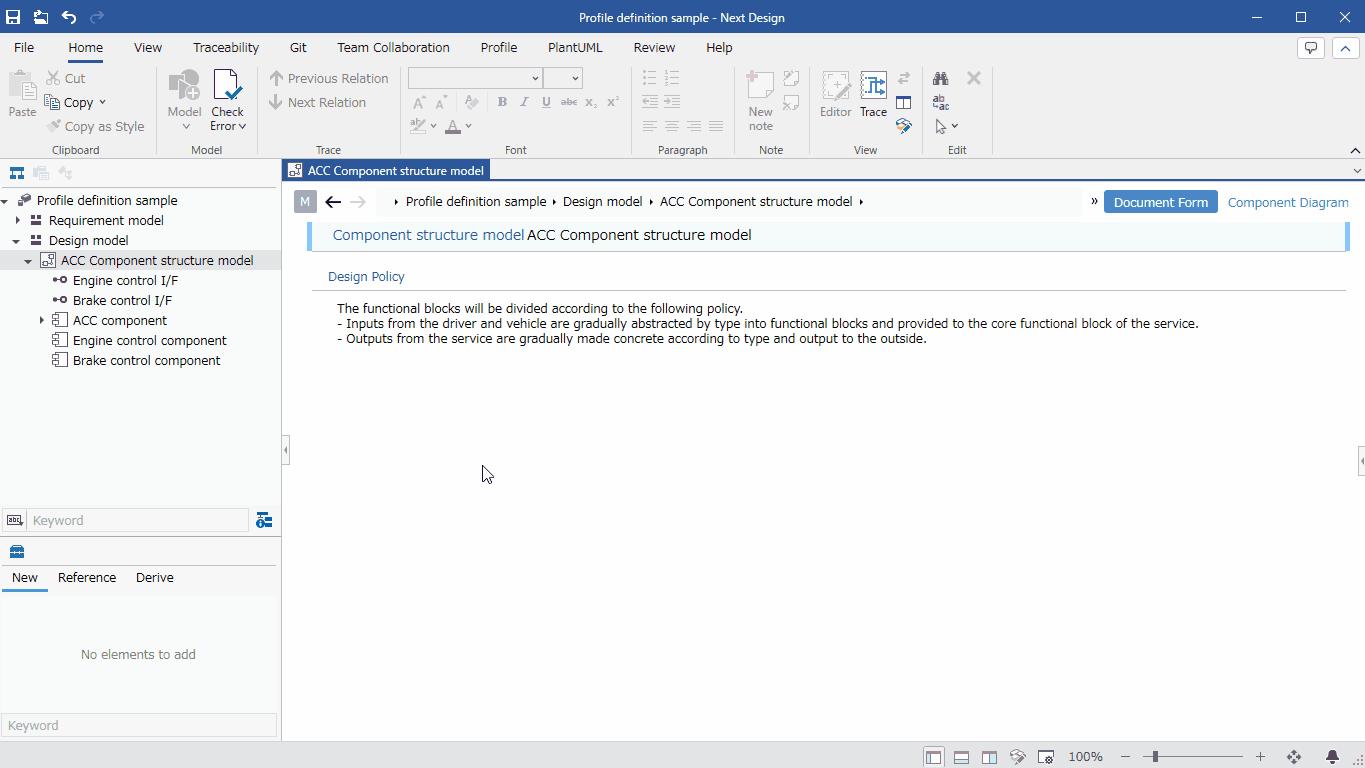
- As with "Placing related models in a list format," click and select a field that has already been placed on the form to specify the placement location of the related model.
- Do one of the following to open the [New Control] dialog.
- Click [Form] > [Form] > [Add Exist Fields] from the ribbon.
- Click [Profile] > [Add Exiting Field] from the context menu.
- In the [New Control] dialog, select the field that holds the related model from the [Fields] options.
- Next, select [Grid] from the [Form Element] options.
- When you press the [OK] button in the dialog, the name of the selected field will be displayed as the title, and the related model will be placed in a grid format under it.
Changing the display columns of a grid
To change the display columns of a grid placed on a form, follow the steps below.
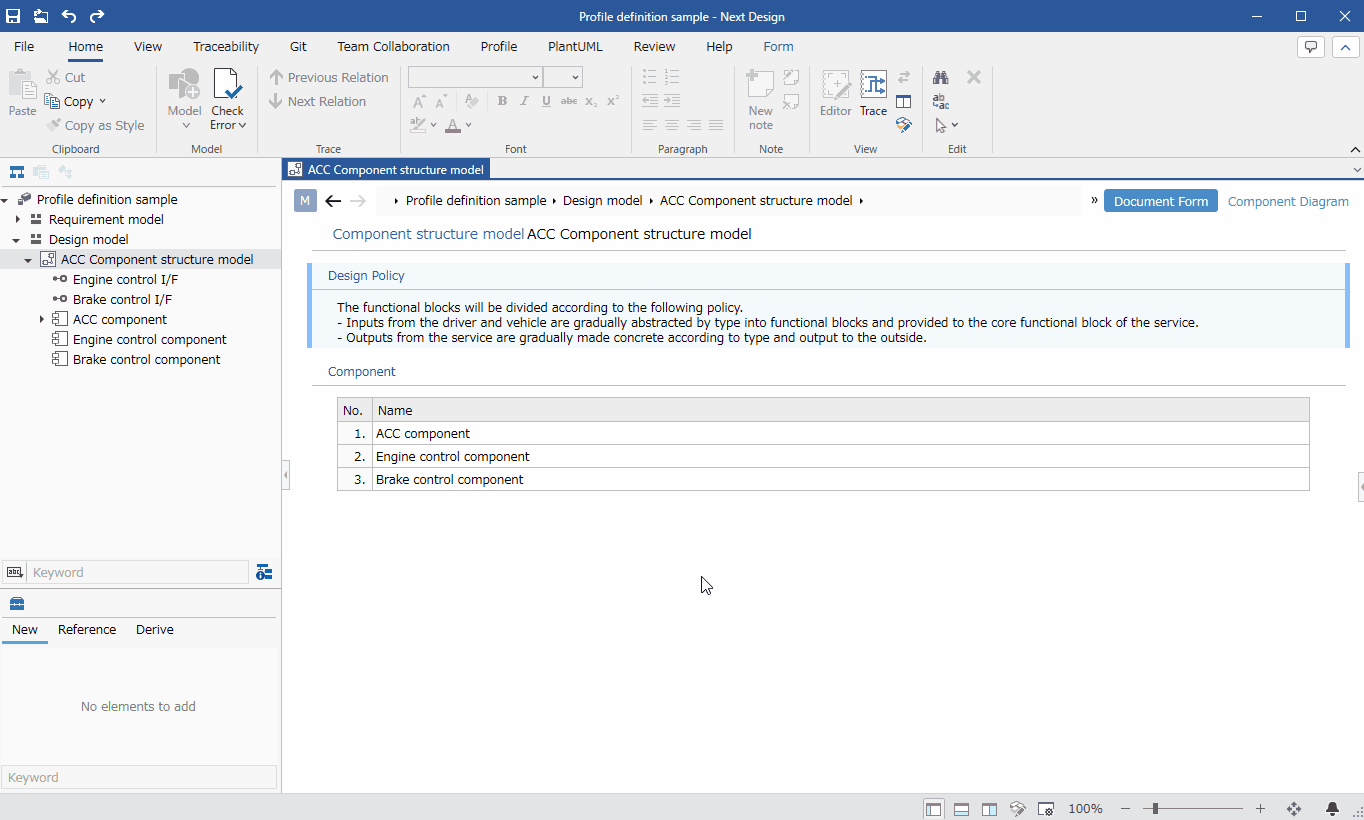
- Open the [Add New Column] dialog box by doing one of the following:
- Select any cell on the grid, and click [Form] > [Grid] > [Add Exist Field Column] from the ribbon.
- Right-click the header row of the grid, and click [Add Column with Existing Field] from the context menu.
- In the [Add New Column] dialog box, select the field you want to add as a column from the [Fields] options, and select the UI format for editing from the [Form Element] options.
- When you press the [OK] button in the dialog box, the selected field is added to the right end of the grid column.
- To change the order of grid columns, do one of the following:
- Select any cell in the column you want to move, and click [Form] > [Grid] > [Move Column Left] or [Move Column Right] on the ribbon.
- Drag and drop the column header of the grid to move the column position.
- To delete and hide a column from the grid, do one of the following:
- Select any cell in the column you want to delete, and click [Form] > [Grid] > [Delete Column] on the ribbon.
- Right-click the column header of the grid, and click [Delete] from the context menu.
- To change the column configuration of the grid, one or more related models must exist.
- If the related model is empty, add a temporary model and then change the column configuration.
Changing the default column width
To change the default column width for each grid column placed on a form, or to reset a temporarily changed column width to the default, follow the steps below.
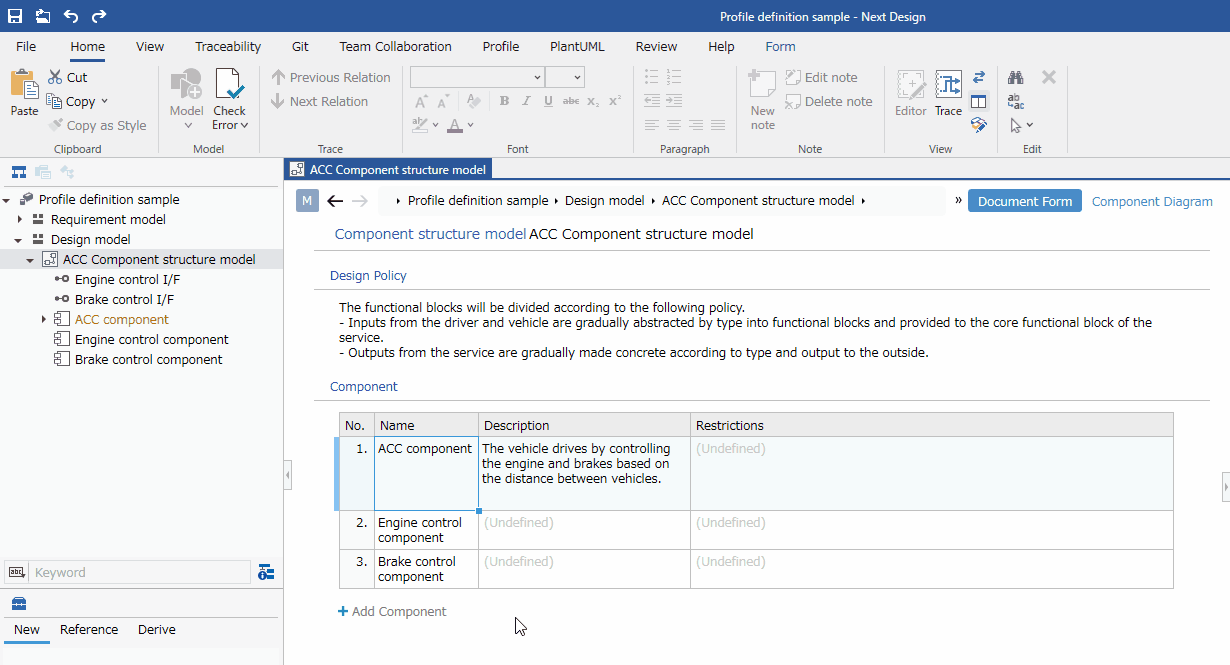
- Select any cell in the grid column for which you want to change the default column width.
- Drag and drop the border of the grid column header to adjust the column width, and then click [Form] > [Grid] > [Set Default Column Width] from the ribbon.
- When you click, the column width is saved in the view definition, and the default column width is displayed when you reopen the project.
- To reset a column width to its default value after temporarily changing it, select any cell in the grid column whose width you want to reset, and click Form > Grid > Reset Column Width from the ribbon.
- The rightmost column in the grid expands and contracts according to the width of the editor view, so you cannot change the default column width.
Change the display format of related models
Change the display format of related models
To change the display format of related models placed on a form, follow these steps:
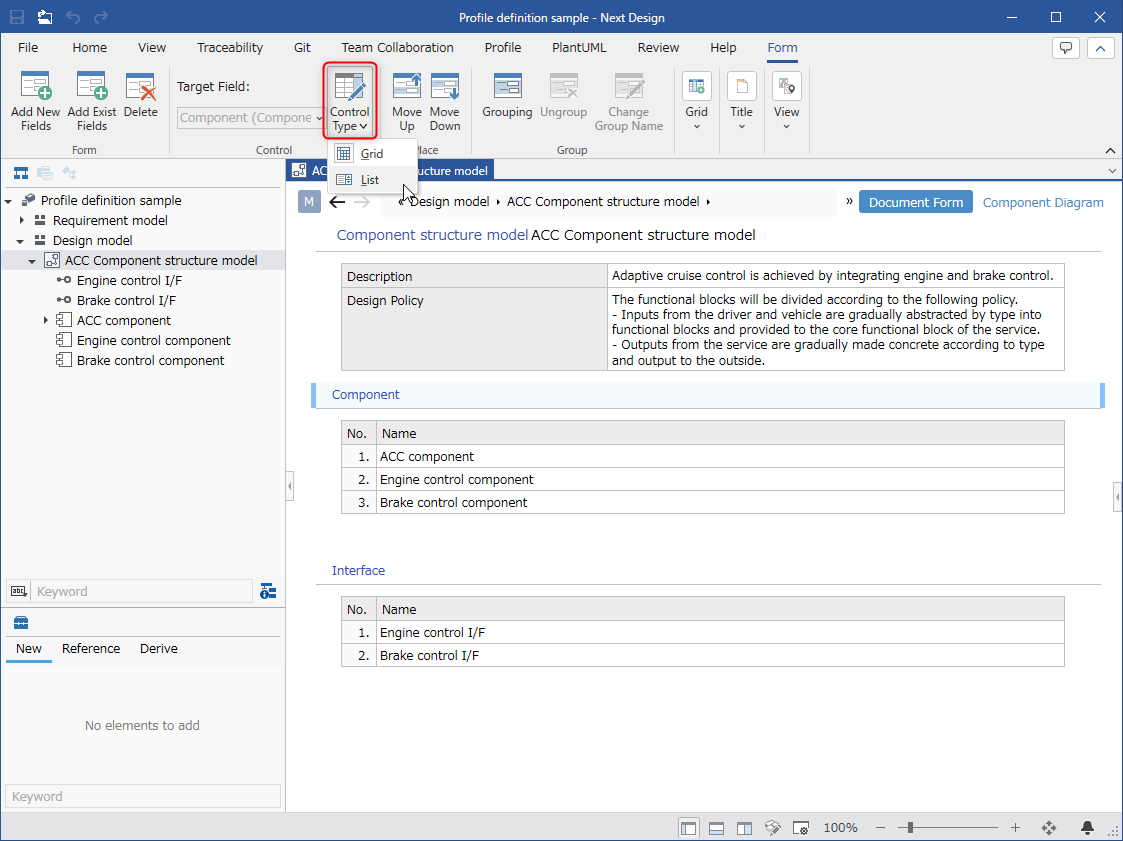
- Click to select the related model whose display format you want to change.
- Click [Form] > [Control] > [Change Shape Type] from the ribbon and select [Grid], [List] or [Model Reference Control (*1)].
*1: [Model Reference Control] can be selected for reference-related models.
Change the order of fields
Change the order of fields
To change the order of fields placed in a form, follow the steps below.
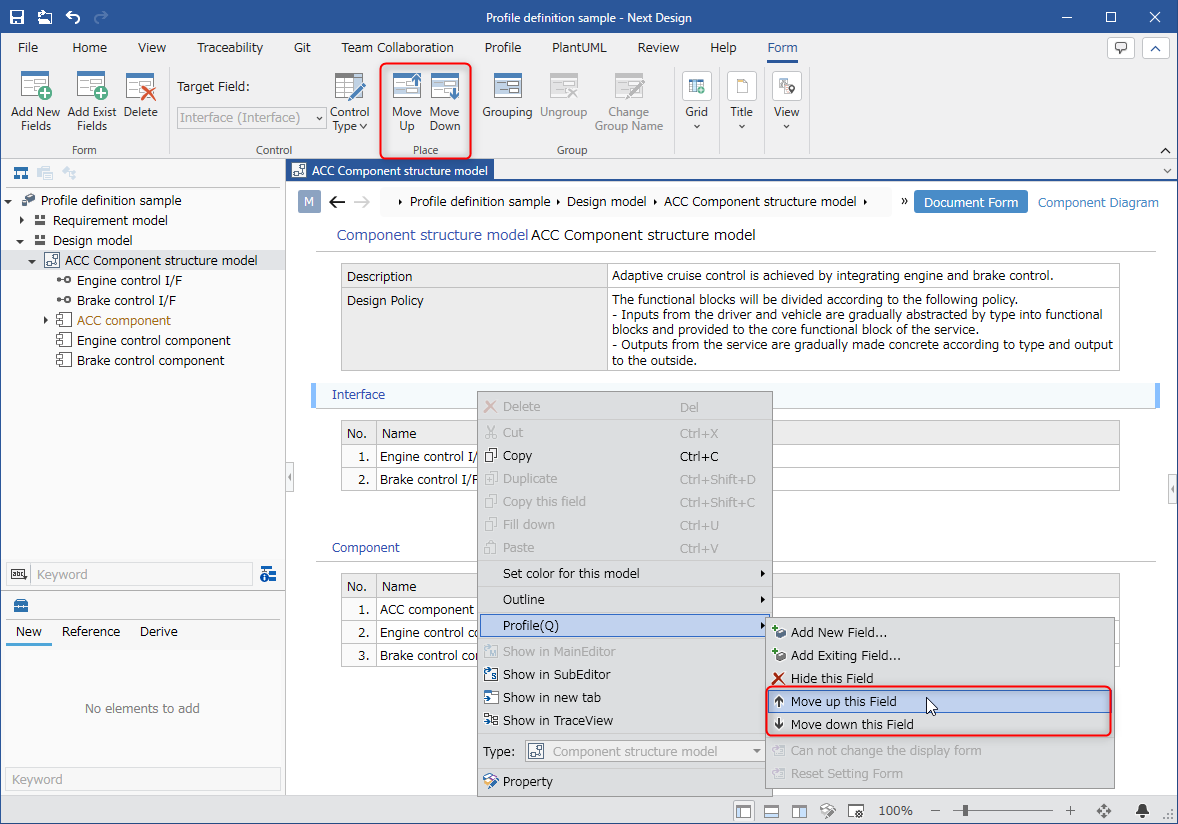
- Click the title of the field you want to change the order of to select it.
- Do one of the following:
- Click [Form] > [Place] > [Move Up] or [Move Down] from the ribbon to change the order.
- Click [Profile] > [Move Up] or [Move Down] from the context menu.
- The order of related models, which are displayed with consecutive numbers, can be changed by selecting the model and dragging and dropping it.
Hide a placed field
Hide a placed field
To remove and hide a field placed on the form, follow the steps below.
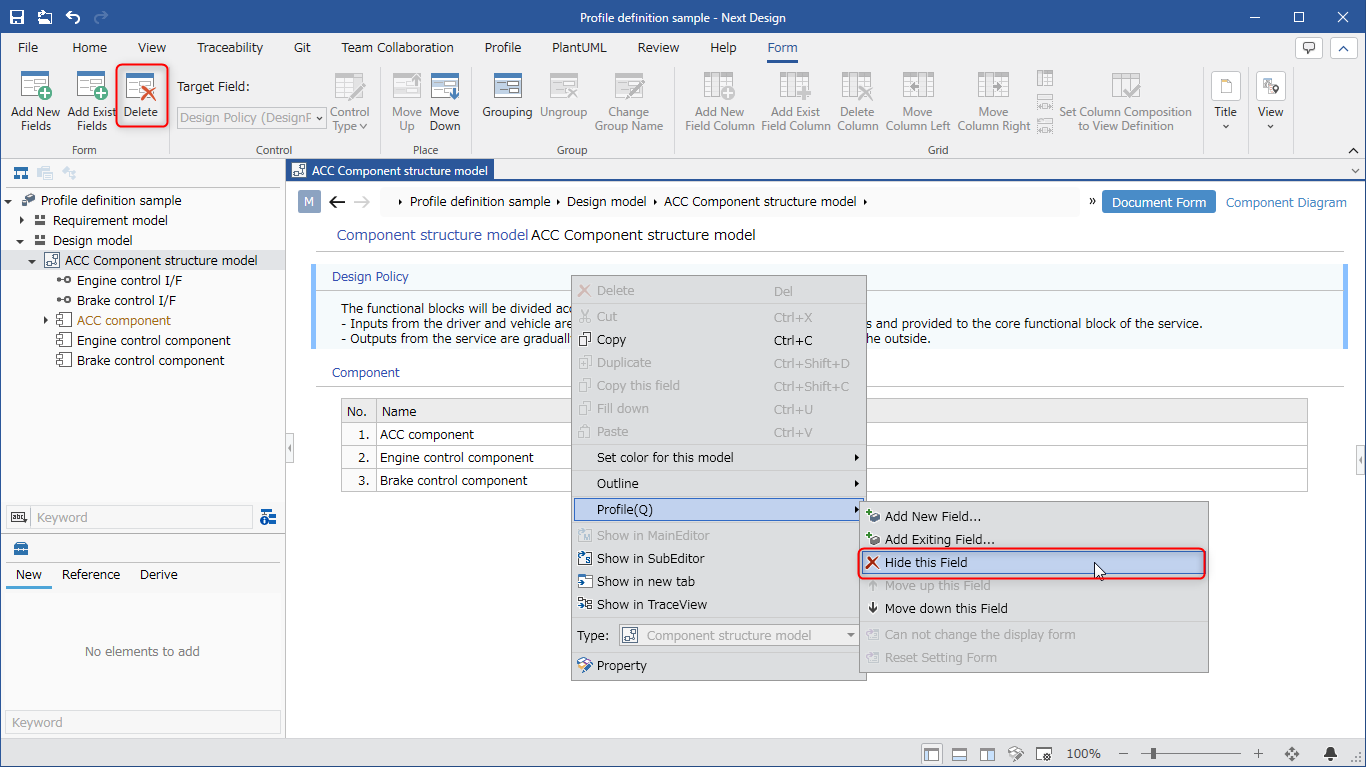
- Click the field placed on the form to select it.
- Do one of the following:
- Click [Form] > [Form] > [Delete] from the ribbon.
- Click [Profile] > [Hide this Field] from the context menu.
Grouping fields
Grouping fields
To give titles to multiple fields placed on a form and group them, follow the steps below.
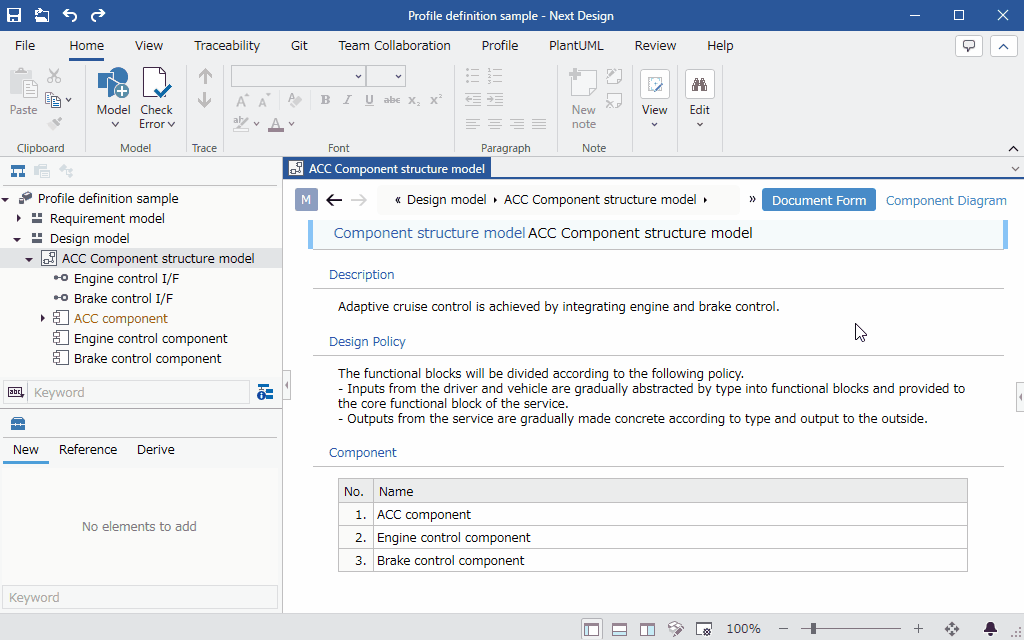
- Select the multiple fields you want to group by clicking them while holding down the ctrl key.
- Click [Form] > [Group] > [Grouping] from the ribbon.
- In the [Grouping] dialog box, enter [Display Name] and [Group Name] and click the [OK] button.
- The group title is added to the form, and the selected fields are arranged under the group. You can collapse or expand each group by clicking the left edge of the group title.
- To group multiple fields, the fields must be adjacent.
- If they are not adjacent, change the order of the fields as described above in "Reordering fields."
- Do not set a group name beginning with "___". If you do, the following will occur:
- The corresponding group will not be displayed in the profile navigator.
- The differences for the corresponding group will not be displayed in the [Changes] dialog or [Update Differences] dialog for reusing the profile.